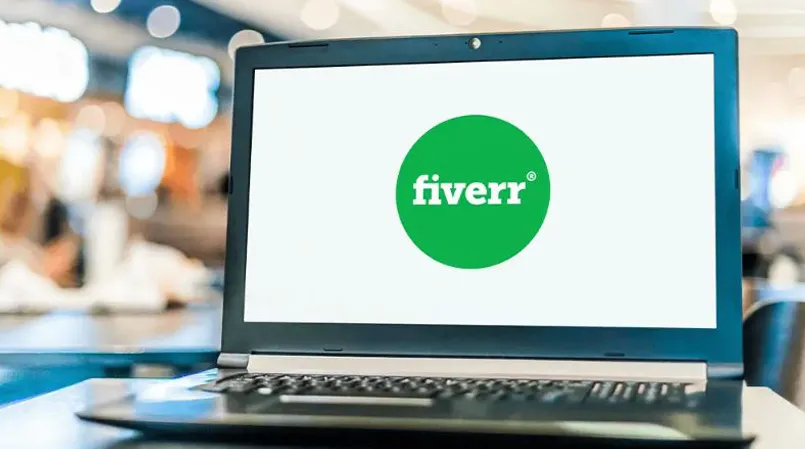Fiverr has quickly become a household name for anyone looking to offer or hire freelance services. But just how much revenue does Fiverr generate annually? This question is quite intriguing, especially considering the rise of the gig economy. In this blog post, we'll delve into the inner workings of Fiverr's business model, unveil the numbers behind their financial reports, and explore how they maintain a steady flow of income. So, buckle up as we explore the financial landscape of this ever-evolving platform!
Overview of Fiverr's Business Model

Fiverr operates on a unique and user-friendly business model that has attracted millions of users worldwide. Its primary focus is to connect freelancers, called "sellers," with customers, known as "buyers," in a seamless marketplace. Here are some essential components of Fiverr's business model:
- Service-Based Marketplace: Fiverr allows users to sell and purchase various services, ranging from graphic design to digital marketing, writing, and programming. Sellers create "gigs" that buyers can browse and purchase directly.
- Freemium Model: While Fiverr does not charge sellers to create listings, they earn revenue by taking a percentage commission from each transaction. Typically, they take around 20% from the seller's earnings.
- Subscription Options: Fiverr also offers membership plans, like Fiverr Pro, where verified professionals can list their services. This attracts higher-paying clients and boosts overall revenue.
- Boosting Visibility: Sellers can pay for additional features like "promoted gigs," which increases their visibility on the platform. This ensures they reach more potential buyers.
Fiverr's model is built on simplicity and accessibility, allowing both freelancers and customers to easily navigate their services. This structure has been a significant driver of their revenue growth, making them a key player in the freelance industry.
Also Read This: How Does Fiverr Website Work?
Revenue Streams for Fiverr

Fiverr, the online marketplace for freelance services, boasts a diverse range of revenue streams that contribute to its overall financial success. Understanding these various streams helps to illuminate how Fiverr generates its impressive income. Let’s break it down!
1. Service Fees: One of Fiverr’s primary revenue streams comes from the service fees charged on each transaction. When a freelancer completes a job, Fiverr takes a commission based on the total order value. This fee typically ranges from 5% to 20%, depending on the order size, providing Fiverr with a stable income as transactions increase.
2. Subscription Plans: Fiverr offers subscription plans like Fiverr Pro and Fiverr Business, which cater to high-demand clients seeking top-tier freelancers. These plans come with additional perks such as a curated selection of freelancers and enhanced customer support, allowing Fiverr to further capitalize on its user base.
3. Fiverr Learn: This platform acts as an online learning hub, offering courses for freelancers to hone their skills. By charging for these educational resources, Fiverr taps into a secondary market, adding yet another layer of profitability.
4. Ads and Promotions: Fiverr also makes money through paid advertising and promotional placements on its platform. Businesses are willing to pay for increased visibility, and Fiverr capitalizes on this need by providing promotional tools.
In summary, Fiverr’s revenue streams are diverse—encompassing service fees, subscription plans, educational resources, and advertising—which collectively enhance its financial portfolio. Now, let’s take a look at how Fiverr has fared financially over the years!
Also Read This: How to Check Gig Status on Fiverr
Historical Financial Performance
Fiverr has seen a remarkable trajectory since its inception in 2010, and its historical financial performance paints a picture of steady growth and resilience. Let's dive into some intriguing highlights!
1. Initial Years: In the early years, Fiverr primarily relied on user growth to increase revenue. The platform struggled initially, but persistence paid off as it gained traction in the gig economy. This increased engagement set the stage for future growth.
2. Going Public: A significant turning point occurred in June 2019 when Fiverr went public with an initial public offering (IPO) that valued the company at around $650 million. This move not only expanded its financial horizons but also validated its business model on a grander scale.
3. Revenue Growth: Following its IPO, Fiverr experienced exponential growth in revenue. For example, in 2019, the company reported revenues of approximately $107 million, which surged to around $189 million in 2020, and continued to rise in subsequent years.
4. Impact of the Pandemic: The COVID-19 pandemic significantly impacted Fiverr's business, accelerating the demand for remote work solutions. As businesses pivoted to online operations, Fiverr’s user base expanded tremendously, leading to record quarterly revenues in 2020 and 2021.
All in all, Fiverr's historical financial performance showcases an impressive growth trajectory, with key milestones that underscore its adaptability and success in the evolving gig economy. As we look ahead, the company seems poised for continued momentum!
Also Read This: Is Fiverr Work for Hire? Understanding Ownership and Rights
Factors Influencing Revenue Growth
When it comes to understanding how much money Fiverr makes yearly, several critical factors come into play that directly influence its revenue growth. Let's break these down!
- Market Demand: The need for freelance services has exploded, especially post-pandemic. As businesses shift towards remote work, platforms like Fiverr that connect freelancers with clients are thriving.
- Diverse Service Offerings: Fiverr has expanded its range of services to include graphic design, writing, programming, and digital marketing. This variety attracts a broader audience and encourages clients to spend more.
- Pricing Strategies: By offering services at multiple price points, Fiverr appeals to both budget-conscious clients as well as those willing to pay a premium for quality. This tiered pricing model can significantly drive revenue.
- User-Friendly Platform: The simpler and more intuitive the platform is, the more likely users will engage with it. Fiverr continually improves its user interface and features, making it easy for freelancers and clients to interact.
- Marketing and Branding: Fiverr invests in rigorous marketing campaigns. Their branding has evolved into a recognizable name for freelancers, which keeps user engagement high and brings in new clients.
To sum it up, factors such as rising market demand, service diversity, effective pricing strategies, platform usability, and strong marketing all play significant roles in influencing Fiverr's annual revenue growth.
Also Read This: How to use buyer solution keywords on Fiverr
Competitive Landscape and Market Position
The competitive landscape within the gig economy is vibrant and ever-shifting. Fiverr finds itself in a somewhat crowded marketplace, challenging competitors like Upwork, Freelancer, and newer entrants. But how does it carve out its market position?
| Competitor | Business Model | Unique Selling Proposition |
|---|---|---|
| Fiverr | Service-based listing | Value for money starting at $5 |
| Upwork | Bidding system | Focus on larger projects and long-term clients |
| Freelancer | Project-based bidding | Wide range of service areas |
Fiverr’s unique positioning stems from its emphasis on quick services and a simple purchasing mechanism. By allowing freelancers to showcase their skills with clearly defined service packages, Fiverr incentivizes both quality and affordability.
In terms of market share, Fiverr has been able to establish itself as a leader within certain niches like graphic design and digital marketing. This is primarily due to its strong brand identity and a loyal user base that continues to grow.
Overall, by focusing on its strengths and navigating the competitive landscape effectively, Fiverr maintains a solid market position while continually driving revenue growth.
Also Read This: How to Make a Studio on Fiverr
Future Projections and Trends
As we look ahead, the future of Fiverr seems bright and promising. Given the significant shifts in how people work and interact with freelance platforms, several trends are emerging that could impact Fiverr's growth trajectory. Here are some key trends and projections to consider:
- Increased Demand for Freelance Services: As remote work continues to flourish, more individuals and businesses are leaning toward hiring freelancers for specialized tasks. By 2025, it's estimated that freelancers could represent a substantial portion of the workforce, possibly reaching over 50%. This shift could lead to greater revenue for Fiverr, as new users flock to the platform.
- Diversity of Services: Fiverr has expanded its range of offerings beyond traditional services like graphic design and writing. With the rise of tech sectors and remote consultations, we may see Fiverr continue to diversify into areas such as virtual reality, AI, and comprehensive marketing solutions.
- Geographic Expansion: Currently a leader in the U.S. and Europe, Fiverr has been eyeing emerging markets in Asia, Africa, and South America. Tapping into these vibrant markets could significantly boost user numbers and annual revenue.
- Technological Innovation: With Fiverr investing in technology, including AI and machine learning, we can expect improvements in user experience and service delivery. Tools that enhance project efficiency could attract more users and increase service frequency.
In summary, the future for Fiverr appears not only sustainable but also packed with potential as trends like remote work, service diversification, market expansion, and technology innovation converge to create new opportunities.
Conclusion
Wrapping it all up, Fiverr has established itself as a remarkable player in the freelance marketplace. With their innovative platform connecting millions of buyers and sellers globally, their yearly earnings are a testament to how the gig economy is thriving.
From its beginnings to its current status, Fiverr has grown by leaps and bounds. Here are a few key points to consider:
- Consistency in Growth: As present earnings indicate, Fiverr's revenue has shown consistent growth year over year, driven largely by trends in remote work and freelancing.
- Market Dynamics: The competition in the freelance space is increasing, yet Fiverr’s unique selling propositions, such as user-friendliness and a diverse range of services, continue to secure its market position.
- User Engagement: With a growing base of avid freelancers and buyers, Fiverr's community aspect fosters repeat business and loyalty, crucial factors for sustained financial success.
In conclusion, Fiverr's projected future earnings look promising, supported by evolving market trends, technological advancements, and a growing freelance economy. It’ll be interesting to see how they navigate this competitive landscape and continue to reshape the future of work. So, if you’re considering jumping into the world of freelancing or hiring a freelancer, Fiverr may very well be a go-to destination!



